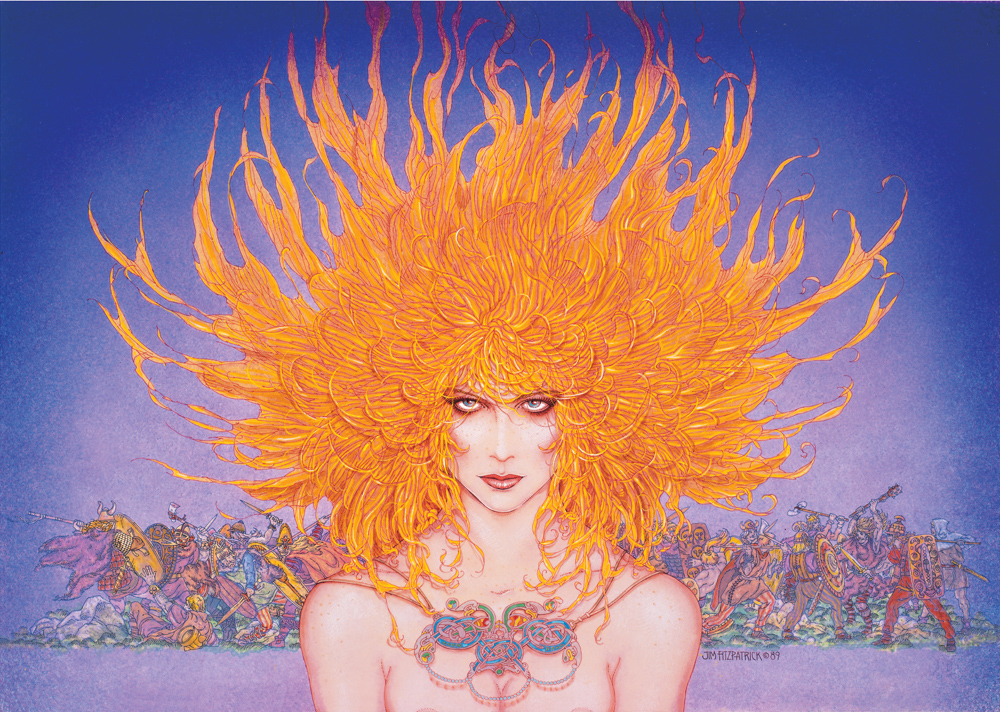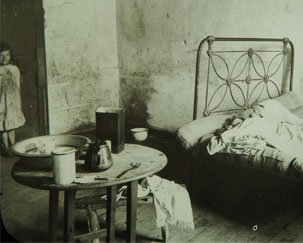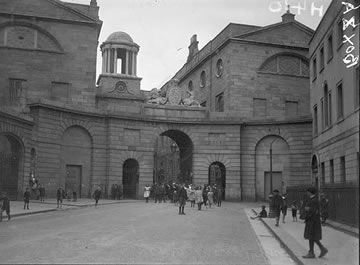THE STOLEN CHILD
By W.B. Yeats
Where dips the rocky highland
Of Sleuth Wood in the lake
Of Sleuth Wood in the lake
There lies a leafy island
Where flapping herons wake
Where flapping herons wake
The drowsy water-rats;
There we've hid our faery vats
There we've hid our faery vats
Full of berries
And the reddest stolen cherries.
And the reddest stolen cherries.
Come away, O human child!
To the waters and the wild
With a faery hand in hand,
For the world's more full of weeping than you can understand.
To the waters and the wild
With a faery hand in hand,
For the world's more full of weeping than you can understand.
Where the wave of moonlight glosses
The dim grey sands with light,
Far off by furthest RossesWe foot it all the night,
Weaving olden dances,
Mingling hands and mingling glances
Till the moon has taken flight;
To and fro we leap
And chase the frothy bubbles,
While the world is full of troubles
And is anxious in its sleep.
The dim grey sands with light,
Far off by furthest RossesWe foot it all the night,
Weaving olden dances,
Mingling hands and mingling glances
Till the moon has taken flight;
To and fro we leap
And chase the frothy bubbles,
While the world is full of troubles
And is anxious in its sleep.
Come away, O human child!
To the waters of the wild
With a faery hand in hand,
For the world's more full of weeping than you can understand.
To the waters of the wild
With a faery hand in hand,
For the world's more full of weeping than you can understand.
Where the wandering water gushes
From the hills above Glen-Car,
In pools among the rushes
That scarce could bathe a star,
We seek for slumbering trout
And whispering in their ears
Give them unquiet dreams;
Leaning softly out
From ferns that drop their tears
Over the young streams.
In Ireland, the Faerie folk are always treated with respect, but many accusations are hurled at them as well, from making crops wither to milk tuning sour.
One of the most common accusations is that they steal humans and spirit them away to live in the Faerie realm, this person is known as a Changeling.
From the hills above Glen-Car,
In pools among the rushes
That scarce could bathe a star,
We seek for slumbering trout
And whispering in their ears
Give them unquiet dreams;
Leaning softly out
From ferns that drop their tears
Over the young streams.
Come away, O human child!
To the waters and the wild
With a faery hand in hand,
For the world's more full of weeping than you can understand.
To the waters and the wild
With a faery hand in hand,
For the world's more full of weeping than you can understand.
Away with us he's going,
The solemn-eyed:
He'll hear no more the lowing
Of the calves on the warm hillside
Or the kettle on the hob
Sing peace into his breast,
Or see the brown mice bob
Round and round the oatmeal-chest.
For he comes, the human child,
To the waters and the wild
With a faery hand in hand,
From a world more full of weeping than he can understand.
The solemn-eyed:
He'll hear no more the lowing
Of the calves on the warm hillside
Or the kettle on the hob
Sing peace into his breast,
Or see the brown mice bob
Round and round the oatmeal-chest.
For he comes, the human child,
To the waters and the wild
With a faery hand in hand,
From a world more full of weeping than he can understand.
One of the most common accusations is that they steal humans and spirit them away to live in the Faerie realm, this person is known as a Changeling.
The humans most at risk though are babies and young children. They are taken and in their place a Faerie child is left, this child is known as a changeling although the term changeling can also refer to someone who has been taken and then returned to the mortal world a few years later.
The Faeries covert human babies as they tend to be happy, healthy, sturdy beings and have no hesitation in swopping them with their own sickly babes. On occasion they have been known to take a child because they believe it is not loved enough by its human parents or sometimes they take the child out of malice or spite, one can never be sure what a Faeries motive is.





